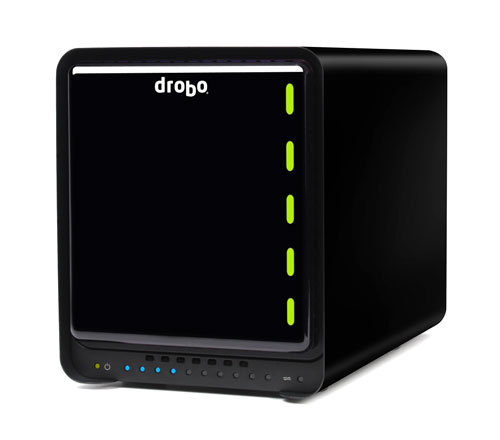Data Robotics Drobo S Review
Introduction & Specifications

The original Drobo direct-attached-storage (DAS) device hit the scene in summer of 2007 and took the tech world by storm. It represented a new paradigm in how you could implement external, redundant back-up storage with much of the same goodness that RAID offers, but without a number of the headaches and the complexity that also comes with traditional RAID solutions. The Drobo still used RAID to redundantly store data across multiple hard drives, but did so using Data Robotics’ own version of it, which it calls BeyondRAID (see the table below). The primary advantages that Data Robotics’ BeyondRAID has over traditional RAID is that with BeyondRAID you can add and remove hard drives that have different capacities and speeds and from different manufacturers; and you do this while the device is operating--without any downtime--and without needing to do any manual data migration.
Despite the fanfare and excitement that came with the Drobo, it didn’t come without detractors who complained about some performance and reliability issues as well as criticism of the device’s limited connectivity options (USB 2.0 only). Since then, Data Robotics has gone through multiple firmware updates to improve performance and reliability. The company has also released an updated version of the Drobo, as well as no less than four different iterations for other market segments, such as for small-and-medium-businesses (SMB) and even a network-attached storage (NAS) version. One of Data Robotics' newer devices is the Drobo S, which is a five-bay DAS device, with eSATA, FireWire 800, and USB 2.0 ports. (The latest iteration of the Drobo--not the newer "S" model--has four bays and only FireWire 800 and USB 2.0 ports.) The Drobo S has another unique advantage over the Drobo--and even all but the most robust RAID solutions--in that, with at least three drives installed, the device’s data can be protected from the failure of up to two drives.

|
| Host Interfaces: |
|
| Drives: |
|
| Power: |
|
| Box Contents: |
|
| Accoustics: |
|
| Capacity: |
|
| Dimensions: |
|
| Weight: |
|
| File System Options: |
|
| Operating System Support: |
|
| Certification: Emissions: |
|
| Security: |
|
| Warranty: |
|
MSRP: $799
The Drobo S is targeted primarily towards "creative pros, photographers, videographers, small office/home office" users, and is available from a healthy number of suppliers in both bare-bones and populated versions. A unit with no drives has an MSRP of $799--which is certainly on the high end when you consider that you can purchase a simple, 2TB external hard drive for less than $150 these days. But a plain old external hard drive won’t give you anywhere near the same amount of data integrity and expandability that the Drobo S offers.







